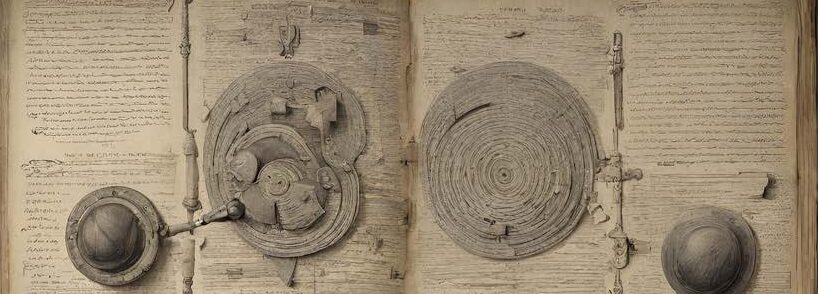
The Different Types of Paper for Printing – Our Complete Guide, n.d, From https://www.avansas.com/uk/blog/different-types-of-paper-for-printing/
–History of Paper, n.d“The word paper is etymologically derived from Cyperus papyrus plant. It is a thick, paper-like material produced from the pith of the Cyperus papyrus plant, which was used in ancient Egypt and the Mediterranean for writing long before the introduction of paper in China.” [2]

The earliest known paper has been unearthed in the ancient Silk Road cities of Dunhuang, Khotan, and Tibet, which traces back to 200 BCE. The miraculous discovery of these undecomposed artifacts after 2,000 years is due to the dry climate in the region. Another significant discovery along with the paper is the presence of ink on the artifacts, indicating that ink was used way before historians manipulated it (History of papermaking, n.d).
Historically, paper has crossed borders and reached from one corner of the world to another over centuries. It has been traced to China in about AD 105 and had reached Central Asia and Baghdad by 751 and 793, respectively. Moreover, by the 14th century, there were paper mills in several parts of Europe. It was the revolutionary invention of the printing press in 1450, which significantly increased the demand for paper (UNESCO, n.d).


It is recorded by the historian Fan Hua that in 105 CE, Ts’ai Lun, working under the Chinese emperor, announced, recorded, and presented the paper-making process (History of papermaking, n.d) and newly invented paper to Emperor Hedi of the Eastern Han Dynasty (Szczepanski, 2019). However, archaeological finds from western China and Tibet suggest that paper was developed centuries earlier (Szczepanski, 2019) .
Similarly, the Korean Buddhist monk Don-Cho introduced paper-making to the court of Emperor Kotoku in Japan in 610 CE. Furthermore, paper-making technology also spread west through Tibet and south into India (Different types of Paper, n.d).
The earliest paper was used for religious purposes, government works, or by the wealthy for business transactions. It was to commemorate the end of a rebellion (Szczepanski, 2019). Religious practice played an important role in the spread of paper as it was a more efficient and easily transportable than parchment made from animal skin, and more durable than papyrus (Britannica, 2023).
Fast forward to the 11th Century, the Arab nations defeated and invaded Spain and Italy, and eventually papermaking spread to Europe.
“In 770 CE, Empress Shotuko ordered the first mass printing of one million copies of a series of prayers, the Hyakumanto Dharani.“
–History of Papermaking Throughout the World

The Traditional Chinese Xuan Paper Making Process
The invention of paper is a symbol of advanced science and technology in ancient China. Previously used writing interfaces like bones, tortoise shells, and bamboo strips were replaced due to bulkiness and weight. Other alternatives like orcale bones, bamboo and silk did not meet the demand of the people due to accelerated growth of the economic and cultural development (Weizi, 2021).
This process is practiced by hand using bamboo, fiber, and bark as raw materials. A series of processes like soaking, fermentation, steaming, bleaching, beating, compacting, and drying is performed to obtain the final product, paper.
Xuan Paper of Anhui Province
Xuan paper, originally produced in Xuancheng City of Anhui Province, was first prepared by Tsai Lun’s apprentice, Kong Dan, who wanted to paint an image of Cai as a symbol of remembrance for his remarkable contribution to paper making.
The primary material for the Xuan paper is blue sandalwood bark. The production process is very long, with a total of 18 various steps. It has a range of distinctive properties. It is durable, making it an excellent Chinese brushwork writing interface. An outstanding quality is that this property permits the visibility of the shades of color and texture with distinct gradations. Later, due to different production methods, Xuan paper was classified into three categories: raw Xuan, ripe Xuan, and semi-ripe Xuan (Feng, 2018).
“Paintings on Xuan paper with a history of more than 1,000 years preserved in the Palace Museum or other local museums in China are testimony to the paper’s outstanding durable qualities.”
–Feng (2018)
Personal Commentary
We all agree that the invention of paper has opened doors and paved the way for further developments in all fields. Over the centuries, paper crossed borders and reached billions of people worldwide. Moreover, the paper-making process has improvised over the decades, improving various aspects of it, including its quality. Fast forward to the 21st century, paper use in most places, like offices, schools, etc., has been replaced with technologically advanced gadgets like Ipads and tablets.
I believe that replacing hardcopy paper with softcopy content affects one’s perception, understanding, and comprehension of text. I think the digital text reading is compelling for quick skimming and reading over the content vaguely. On the other hand, paper reading involves reading through the lines, not missing the important information. Moreover, annotating and creating notes of the paper texts radiates emotions and energy as we use our senses to perform these activities.
References
Britannica, T. Editors of Encyclopaedia (2023, October 7). Paper. Encyclopedia Britannica. https://www.britannica.com/technology/paper
History of Paper. Wikipedia. https://en.wikipedia.org/wiki/History_of_paper
History of Papermaking Throughout the World. Robert C. Williams Museum of Papermaking. https://paper.gatech.edu/sites/default/files/2021-04/History%20of%20Papermaking%20Around%20the%20World.pdf
Weizi, B. ( 2019 , December 16). One of the Four Great Inventions of China: Paper-making. Science and Technology Daily. http://www.stdaily.com/English/Service/2021-12/16/content_1239506.shtml
Szczepanski, K. (2019, July 03). The Invention of Paper. ThoughtCo. https://www.thoughtco.com/invention-of-paper-195265
The Different Types of Paper for Printing- Our Complete Guide. Avansas. https://www.avansas.com/uk/blog/different-types-of-paper-for-printing/
Feng, J. (2018, November 2). The Evolving Art of Paper Making over Millennia. China Today. http://www.chinatoday.com.cn/ctenglish/2018/ich/201811/t20181102_800146037.html
United Nations Educational Scientific and Cultural Organization. Did you know? The Importance of Paper Making Technology in Cultural Exchange along the Silk Roads. UNESCO. https://en.unesco.org/silkroad/content/did-you-know-importance-paper-making-technology-cultural-exchange-along-silk-roads
